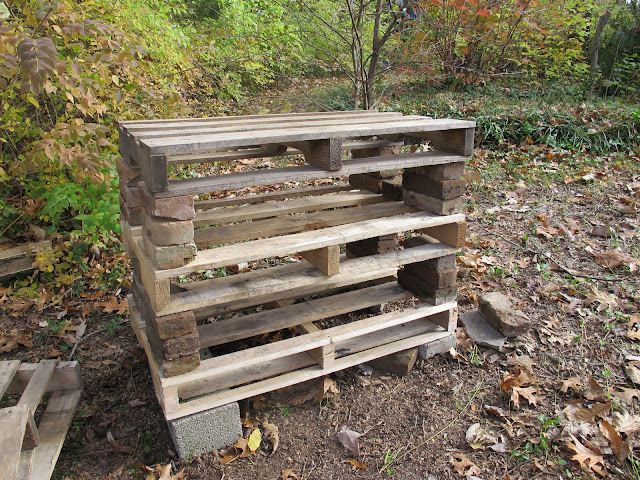 |
| The stems of decaying wildflowers provide homes for overwintering critters |
Dear readers, you know me, I took this as an invitation to tell her a little about native bees.
Don't worry if you can't find a beekeeper who wants to take care of bees on your land, you don't need honeybees to pollinate your vegetables, fruits and flowers. All you have to do is create a pollinator friendly garden and the native bees will be busy buzzing around your garden. Native carpenter bees, bumblebees, small carpenter bees, mason bees, flies and beetles do a a grand job of pollinating your garden. In fact, they're even better at pollinating blueberries, watermelons, pumpkins, tomatoes, and squashes than honeybees.
She was very excited, so, I said, "Here's my card, please check my blog for information about native plants and pollinators and call/email anytime for information or to get together to talk about planting for pollinators."
If you're new to this blog, here's what you need to create a pollinator friendly habitat.
- plant large swathes of nectar and pollen producing plants (Central Basin natives make sense in a Middle Tennessee garden)
- plant host plants~so the offspring of butterfly, beetles and other pollinators can feed
- plan for bloom from late spring to early winter
- bee sure to include water
- provide nesting sites near your garden for a variety of visitors: Build a pollinator condo, leave some bare ground for earth nesting bees and pile decaying logs for beetles who like to tunnel.
- practice peaceful coexistence. Bees sometimes choose to nest in inconvenient places. Rather than exterminating them, think of it as an opportunity to watch and learn about them up close.
My new friend had been paying attention to the news reports about bees and like many people assumed that honeybees are the bee all end all for gardens. Of course, it makes sense that many come to that conclusion...Honeybees have gotten most of the attention. Yes, we should do all we can to save honeybees, let's not forget our native bees in the process. Native pollinators are in peril from loss of habitat and pesticide use. We can help them. We must make sure that everyone knows how important native bees are to our natural ecosystems. After all, hundreds of other species depend upon native bees to pollinate wildflowers, native trees and shrubs.
 |
| (Five Things You Can Do Right Now To Save Pollinators) |
You and I can make sure that native bees get more attention!
We can share our knowledge through our blogs.
We can talk to our gardening friends.
We can invite native plant experts and ecologists to speak to our garden clubs.
We can request pesticide free plants at garden centers.
Of course you all know that the very best thing you can do for pollinators is to never, ever, ever, ever use pesticides!
xoxogail
Gail Eichelberger is a gardener and therapist in Middle Tennessee. She loves wildflowers and native plants and thoroughly enjoys writing about the ones she grows at Clay and Limestone. She reminds all that the words and images are the property of the author and cannot be used without written permission.




































